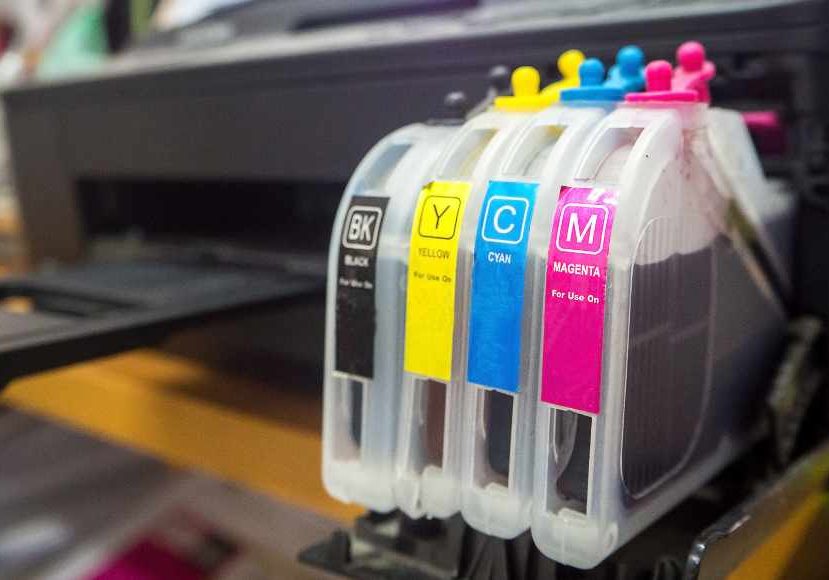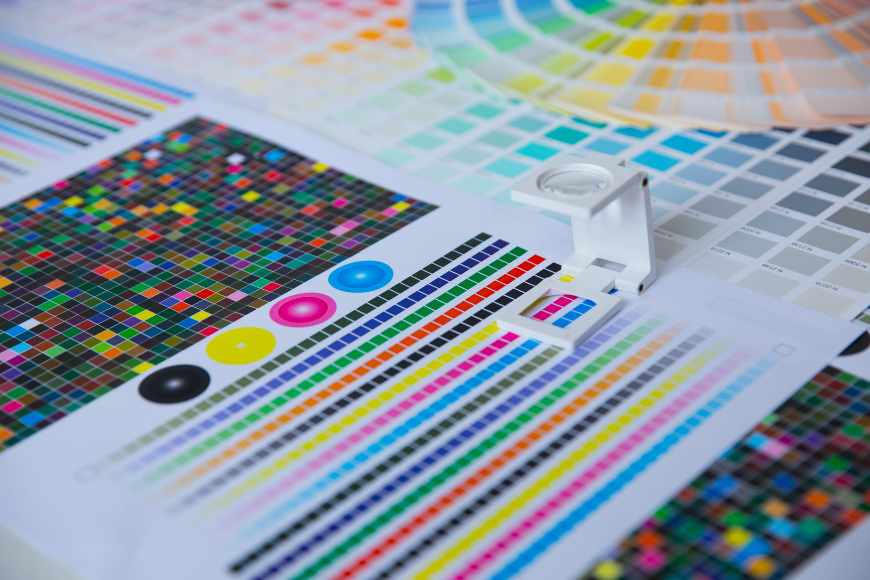
Should You Use CMYK or RGB for Print?
Explore the key differences between CMYK and RGB color models to determine the best choice for your printing needs, ensuring vibrant and accurate results.
Learn | Printing Guides | By Jeff Collier
This guide to using CMYK or RGB for print will answer all your questions regarding printing high-quality images with vibrant, authentic colors.
Whether you’re a graphic designer, illustrator, or photographer, you probably pay too much attention to color.
It’s only natural that you don’t want to lose all your work when printing.
Well, choosing the wrong color mode can alter the printed shades.
For this reason, you need to learn how to convert your image format, understand the properties of your printer, and select the best settings for your print.
So, keep reading this article for all the information on the best color mode for print.
Table of Contents
Difference Between CMYK and RGB for Print
Two photos might look identical. That said, if one is printed using RGB and the other using CMYK settings, the resulting print will be nothing alike.
The difference between CMYK and RGB seems straightforward.
One mode uses red, blue, and green as primary colors, while the other uses cyan, magenta, yellow, and black. That’s not where the distinction ends, though.
CMYK is a subtractive color mode that relies on pigment for coloration, making it perfect for ink printing.
The print gets its opacity from the black ink, with lighter shades added on top to create the final shade.
On the other hand, RGB is an additive mode that depends on light.
When the red, blue, and green light are mixed together, they produce a white shade rather than black.
When Is CMYK Used?
Most modern printers have CMYK cartridges corresponding to the CMYK values. This is only natural since CMYK files represent pigments, much like the ones in printers.
The main issue with CMYK is the lack of color variety. There are only 16,000 possibilities with CMYK compared to the millions of options with RGB.
So, if you’re using a traditional printer, you should go for CMYK mode if you’re printing any of the following:
- Business cards
- Stickers
- Brochures
- Stationary
- Flyers
- T-shirts
When Is RGB Used?
Typically, RGB is the mode used for digital designs. In fact, the screen you’re using right now relies on RGB.
It consists of millions of tiny pixels of red, blue, and green light combining to form various shades.
Therefore, RGB color mode has much wider shade options, especially if you use Adobe RGB. Unfortunately, RGB images don’t always translate well in print.
The reason is that traditional printers use CMYK cartridges. The printer would need to convert the RGB values into the closest CMYK values automatically.
How Much Do You REALLY Know About Photography?! 🤔
Test your photography knowledge with this quick quiz!
See how much you really know about photography...

Since there are significantly fewer CMYK shades, the resulting print would be incredibly muted and dull compared to its digital counterpart.
Fortunately, this isn’t the case anymore.
Nowadays, there are numerous modern software and workflows that can seamlessly translate RGB values into printable CMYK.
This way, designers can enjoy limitless color options while printing accurate shades.
Should You Use CMYK or RGB for Printing?

No matter the type of printer you’re using, you must keep in mind that it probably has a CMYK cartridge. While some professional printers might have more shades, the four basic colors are the same.
If your file has an RGB color mode, the printer’s limited gamut won’t capture all the shades, resulting in a muted print.
So, converting your color mode into CMYK will lead to a predictable print. However, you might need to tweak the colors before printing to get similar shades to the original RGB file.
Here are the most common printing scenarios you might encounter and the best color mode for each of them:
CMYK or RGB for Printing Photos
If you’re printing photos or large photo posters, using CMYK is crucial. You don’t want to spend hours editing your pictures only for the printed version to have muted colors.
What’s more, you want the maximum resolution for the shades to be as accurate as possible. So, using 16-bit files is the way to go.
Unfortunately, saving all the files as CMYK models will occupy plenty of space. If you’re a professional photographer, having enough disk space for all your projects will be impossible.
For this reason, you should save your pictures as 16-bit RGB files, then translate them to CMYK just when you’re about to print.
CMYK or RGB for Printing Digital Art
A major problem arises when printing digital art. Many artists enjoy the freedom that they get from using RGB color mode. Even using the limited sRGB colors offers more variety than CMYK.
RGB is ideal for digital art. After all, it utilizes the sRGB color space that most monitors and digital displays have. Additionally, storing your digital designs in RGB mode takes up less space.
When it comes to printing, though, you must convert your design into a CMYK file. Otherwise, the final print won’t have the same color profile as the original digital art.
CMYK or RGB for Fabric Printing
No matter what kind of printer you use, fabric printing produces unpredictable colors. The shades don’t only depend on the file type and printer you use, but the fabric can also drastically alter the shades.
For this reason, you’ll want to have as much control over your print as possible. So, using CMYK files is the best option.
If you’re going for vibrant patterns, you can still design using the various RGB color models. Yet, you must export the file as CMYK before printing.
CMYK or RGB for Sublimation Printing
CMYK is the perfect model for sublimation printing. This printing method uses a white base, with the dyes added on top through pressure and heat.
RGB files can create distinct, vibrant designs of sublimate prints. However, the process also uses CMYK cartridges.
Unlike a home printer, sublimate printers have a wider spectrum of colors. This leads to an accurate translation of RGB into CMYK and an overall higher quality.
Take the HARD Photography Quiz! 🤯
Now it's time to really test your photography knowledge!
(99% of people can't get all the questions right...)

How to Convert RGB Into CMYK for Printing
If you’re working on a new project, it’s best to adjust the color mode to CMYK from the get-go.
In Adobe Illustrator, InDesign, and Photoshop, you’ll have this option under the “Color Mode” tab when creating your new project.
If you’ve already saved your files in RGB and you want to save them as CMYK for printing, Photoshop can be a lifesaver.
If you edit your work in Adobe Photoshop before printing, you’re in luck! Not only can you save your project in any file format, but you can also adjust the color mode.
Do the following:
- First, open your file in Photoshop.
- Navigate to Image > Mode > CMYK
- Afterward, carry out all the edits you like.
- Lastly, save your project by clicking File > Save As.
Other Factors to Consider When Printing
The color mode significantly affects the end result of your print. After all, it’s what translates your digital images into pigments on paper.
Yet, other considerations alter the quality of your printed picture. Even if you’ve gotten the color mode exactly right, you should pay attention to the following:
File Format
Whether you’re printing a poster or you’re printing on fabric, if your design has no background, using a PNG file format is best.
PNG images have the best depth and detail due to their lossless compression.
Alternatively, you might also use PDF files, which are extremely similar to PNG. However, editing those files is far trickier.
As for file size, 16-bit files offer the most flexibility and detail when editing. Unfortunately, though, they’re comparable to RGB color modes.
To explain, 16-bit images might have incredible details, making them perfect for digital art. Yet, regular CMYK printers won’t capture all these details, especially in smaller prints.
Accordingly, if you have a larger print, it’s best to use 16-bit images to keep the details intact. Otherwise, 8-bit files will be sufficient.
Print Size
The print size mainly depends on your image’s resolution. If you have a low-res image, you won’t be able to print it on a large scale.
The opposite is also true. If you want to print a high-resolution image with extreme detail at a much smaller scale, the resulting print will be muddy.
Generally, the largest print you’ll get from a 400 × 600 image is a 4 × 6”. In contrast, you can print a 120 × 180 poster if the original image has a resolution of 1200 × 1800.
Printer Type
If you’re using a simple home printer, you could get a pretty decent quality by adjusting the color mode, file format, and print size.
Having said that, technology is constantly advancing. Professional printers don’t only house four colors. Instead, three extra ink shades are available, making for seven-color printing.
This means you can get away with printing RGB files without converting them first. Keep in mind that the shades might still differ. Still, the distinction will be minimal.

Check out these 8 essential tools to help you succeed as a professional photographer.
Includes limited-time discounts.














